- Home
- David Hewson
Carnival for the Dead
Carnival for the Dead Read online
A city of marble, did I say? Nay, rather a golden city . . . a wonderful piece of world. Rather, itself a world.
Modern Painters, John Ruskin
Millions of spiritual Creatures walk the Earth
Unseen, both when we wake, and when we sleep.
Paradise Lost, Book IV, John Milton
CONTENTS
A Venetian Glossary
DORSODURO
Carpaccio’s Dog
THE FLIGHT OF THE ANGEL
The Island of the Dead
A RENDEZVOUS IN THE DARK
Every Last Drop
CARPACCIO’S SAINT
The Count of Saint-Germain
THE HOUSE OF SPIRITS
One Among Many
THE ARCADES
The Nature of the Bones
THE MAN IN THE LINEN SUIT
A Venetian Glossary
Bauta – a full-faced carnival mask with a square jaw tilted upwards.
Baccalà – a popular cicchetti dish made from salt cod.
Calle – a street or alley.
Campanile – a bell tower.
Campiello – a small square.
Campo – a large open space, normally at the centre of a Venetian parish.
Cicchetti – Venetian snacks served with drinks, similar to Spanish tapas.
Colombina – a female carnival mask based upon a comic servant from the Commedia dell’Arte.
Fermata – the ‘stop’ for a vaporetto (or bus elsewhere).
Fondamenta – a waterside street or quay.
Forcola – the complex wooden rowlock on a gondola which holds the gondolier’s oar.
Frittelle – sweets, like doughnuts, made specifically for the carnival.
Larva (Volto) – a ghostlike white carnival mask normally worn with a black costume and black tricorn, similar to the bauta.
Medico della Peste (The Plague Doctor) – one of the most striking carnival costumes, based on the uniform recommended by the sixteenth-century French physician Charles de Lorme for ‘safely’ treating plague victims.
Moretta – an oval mask for women, originally used when visiting convents.
Ombra – a small glass of wine.
Pasticceria – a pastry shop.
Piscina – an open space or street that was once water.
Quatrefoil – a common architectural feature based around four petals or leaves arranged in a symmetrical pattern.
Remo – the gondolier’s oar.
Rio – a small canal.
Rio terà – a former canal that has been filled in to form a street.
Riva – a street along a canalside quay.
Salizada – an ancient name for a paved street (though not all paved streets are called a salizada).
Sarde en saor – a Venetian speciality of pickled fish, a common cicchetti dish.
Scuola – literally ‘school’ but in Venice from the thirteenth century on the meeting place for a religious and charitable confraternity. The scuole were divided between the grandi (great) institutions and the piccole (smaller), less important bodies. The Accademia and the entrance to the civil hospital of Giovanni e Paolo are both former scuole grandi.
Sestiere – a city district. Venice is divided into six, as the name suggests: Cannaregio, Castello, San Marco, Dorsoduro, Santa Croce and San Polo.
Sotoportego – a public passageway running beneath a building.
Spritz – a popular drink in Venice, usually made of a bitter such as Campari or Aperol with prosecco, sparkling water, a slice of lemon and an olive.
Zattere – the southern shore of Dorsoduro, so called because it was once the place where zattere (rafts) were moored.
DORSODURO
The man on the Zattere vaporetto jetty wore a grotesque white mask, a black flowing cloak and a broad-brimmed hat with a silver clasp. A shiny silk ruff stood in a stiff circle from his throat around the edge of his broad shoulders. At the front a long ivory beak extended to his chest, like that of a monstrous giant bird, curving downwards with a cruel sneer. In place of the creature’s eyes were spectacles covered in deep blue crystals, opaque and sinister. He was tall and seemed strong and familiar with the process of helping travellers clamber onto the shore in difficult conditions.
‘Come, come,’ he called as the narrow vaporetto bobbed awkwardly on the heavy swell of the Giudecca canal.
It was the first week of February and carnival had begun, in the coldest, brightest weather Teresa Lupo had ever known in Venice. Conditions that seemed appropriate for this strange and unexpected visit.
‘Mother,’ she said, placing her frozen fingers on the brown fox-fur coat of the woman next to her.
‘I’m not an invalid,’ Chiara Bianchi declared, tugging at her small wheeled suitcase. ‘I can manage.’
Then she grasped the hand of the masked man and took one step forward, placing a firm, stiletto-heeled foot on the slippery planks.
Teresa watched as he guided her to an area where the ice and remnants of compressed snow had been swept clear. After that she swung her own battered rucksack over her shoulder, trying to peer into the mask, to see behind the eyes. It was impossible.
‘Very good,’ he said, taking her hand with a firm, determined grip. ‘Now . . .’
She found herself half-pulled out of the boat then firmly planted on the secure part of the jetty.
‘What are you?’ she asked and then remembered to thank him. ‘Il Medico della Peste,’ her mother interrupted in a sharp, cutting tone, as if only a fool would have been ignorant of this fact.
‘Exactly. The Plague Doctor,’ the man said, bowing, doffing his broad black hat and sweeping it before them.
The pale, majestic shape of Redentore, the basilica across the water, caught her eye, its form reflected in the glittering ripples of the canal. A spear of winter sunlight shot across the waves, from Giudecca to Dorsoduro, like a pattern along the scaly side of some gigantic fish.
‘Long time since there was plague in Venice,’ Teresa muttered.
He popped the hat back on his head, tapped his long beaked nose and said, ‘See what a good and careful job I do. Buona giornata . . .’
They watched the vaporetto bob sideways into the choppy expanse of lagoon then head out into the lively waters.
‘Why did she have to come here?’ Chiara moaned. ‘It’s cold and damp and miserable. What’s wrong with Rome?’
Teresa took her mother’s arm, envying with more than a little guilt the warmth of the thick fur. She could remember stroking this same coat as a curious child. The vast, enveloping garment was so old it must have been in and out of fashion four or five times over the decades.
Warily, taking care for both of them, Teresa led her onto the broad, icy cobblestones of the Zattere promenade. The wheels of the little suitcase squealed in protest at the cold. The air was sharp and salty, so bitter and dry it made Teresa’s head ache. The day seemed to have emerged from the imagination of that English painter Turner, the one she’d adored since the moment she’d seen his tantalizing panoramas of calli and campi and canali. Above them the sky ran everywhere, a glassy blue coverlet over the lagoon, an artist’s colour, reticent yet firm in its subtlety, imaginative and challenging. Beyond the line of the island opposite the sun hung low and sullen over the Adriatic. Even without the curious appearance of the Medico della Peste, Teresa Lupo felt as she always did in Venice: a stranger who had stumbled into a continuous and impenetrable drama, one that had begun centuries before and seemed fated never to reach its conclusion.
‘Sofia’s what . . . forty-six years old,’ she pointed out as they struggled across the slippery stonework. ‘Only ten years older than me. She can go wherever she wants.’
‘A child!’ The loo
k was familiar and caustic. Chiara was never one to let what she saw as an error pass without mention. ‘More than you ever were.’
‘Sorry,’ Teresa said quietly, trying to concentrate on staying upright.
According to the map the apartment was several hundred metres to the east, beyond the Ponte agli Incurabili, presumably an area once given over to a hospice. She’d visited the city many times but had never strayed much into this area behind the great basilica of Salute, close to the point where the tip of Dorsoduro narrowed until it formed the Punta della Dogana, the needle-like platform that protruded into the Basin of St Mark. As they strayed further from the busy vaporetto stop the condition of the terrace worsened. It was just past midday and there was scarcely a soul to be seen. This seemed hard to countenance. The station had been teeming with people arriving for the carnival, some in costume already. Yet not a soul had found this quiet, open stretch of promenade alongside the Giudecca canal, and so the massive paving stones became ever more treacherous with glassy ice. The papers said the weather had not risen above freezing in days, and would stay bitterly cold for a week or more. More snow was threatened. Winter had dug its teeth deep into Venice and seemed determined never to make way for spring.
Struggling with the heavy bag over her shoulder Teresa navigated them into the centre of the pavement and tried to stay upright, amused that her mother, in old-fashioned stilettos and with the suitcase to steady her, seemed to find this somewhat easier.
‘You always wear flat heels,’ Chiara Bianchi chided her, reading the expression in Teresa’s face the way a parent always did. ‘Why? Sofia never does.’
‘We’re different people,’ she said simply, still focusing on the ice. ‘Sofia has a mind of her own.’
‘Half a mind. A weak one. Gallivanting over the globe . . .’
Growing up, Teresa was secretly jealous of her aunt. Sofia was beautiful in a way that she, as a plain, awkward and tongue-tied child, could never hope to emulate. Tall and elegant, curly and wayward hair dyed blonde, forever smiling, always ready with a witty, amusing and, the older Teresa soon appreciated, coquettish remark. The kind of woman that men liked, yet a good aunt, one who never forgot her niece. To the young, confused and occasionally deeply miserable Teresa she had been a confidante, a friend, a not-so-secret ally in the battle a difficult child turning into a yet more difficult teenager wished to wage against the world.
‘I envied her,’ she murmured, knowing this would infuriate her mother, but aware that it had to be said.
‘What? Twice married, once widowed, once divorced. Traipsing through New York and London and God knows where else like some gypsy? Forever falling in love, out of love. Impoverished, with no career . . .’
Sofia wanted to paint. And write. She craved freedom, a different challenge with every new day. She was everything a plain young studious girl ached to be. But as she watched her aunt embrace horizons that stood further away from Rome with each passing year, Teresa had come to understand that she lacked both the talent and the courage. Teenage rebellion gave way to learning, duty and, as much to her surprise as that of her mother, a calling. First medicine then a career as a pathologist with the Roman police. A decade and a half disappeared so quickly she never saw it go. As Sofia stumbled from man to man, city to city, never quite selling a painting, never getting round to finishing the book she’d been promising the world since she was nineteen, her niece emerged from the awkward chrysalis of childhood and metamorphosed into a respectable, reliable civil servant, a woman of duty, happily tied to a loving relationship with an older police officer she adored.
There were no regrets really, nor after all these years any envy. Men and women were what they were. What remained were the memories and these she still held dear: Sofia’s headstrong emotions and unstoppable enthusiasms, her love for those around her, and the energy she brought to every incomplete task that occupied her until another came along to take its place, and was duly embraced with such overwhelming passion that the memory of its predecessor was erased in an instant.
In time Teresa had come to feel as her mother did, responsible. That made the present situation worse. They had, perhaps, failed Sofia, in ways they could not yet understand.
It took ten minutes to stumble and skate their way along the ice. Across the water Palladio’s Redentore church stood serene and timeless on the island of Giudecca.
Redentore. The Redeemer. As a student Teresa had come to Venice for the feast of the same name in July, a celebration of the end of the sixteenth-century plague that had taken the lives of thousands, among them the painter the English called Titian and the Italians Tiziano. The basilica was a companion, a sister almost, for the other great church of Salute, which stood no more than a few hundred metres from where they now laboured on the unsure cobblestones of the Zattere promenade.
She could still picture the fireworks over St Mark’s Basin and the illuminated boats upon which the Doge himself had once walked across the lagoon, to give homage to God in the church Palladio had built as a plea for the return of health and sanity to the city.
As a Roman, Teresa Lupo was familiar with the idea that one never quite escaped the past. The insidious hold the dead maintained on the living was, however, different in Venice. In her native city history stood out boldly in the midst of the modern world, proud of its heritage, always keen to tap the shoulder of any passing stranger and whisper, ‘Listen to me.’
In Venice the past was more reticent. Beyond the tourist sights, San Marco and the Rialto, it lurked in the shadows, seeping out of the cracked stones like blood from ancient wounds, as if death itself was one more sly performance captured beneath the bright, all-seeing light of the lagoon.
A sudden chilly breeze caught around them and its arid freezing power stole away her breath. She remembered the painter Turner again. There was no real horizon to this place, nothing to define their position here but the sky and the sea. Venice was a world of its own, aloof, separate, impenetrable. One that cared little for anything but itself. For where else was so beautiful, so unique?
Teresa Lupo checked the address. They were almost at what was once the salt warehouse at the point of Dorsoduro, by the last few houses before the open space at the tip. There was a green iron gate with bells and nameplates. Beyond lay a narrow footpath leading to a ramshackle building that seemed to lean a little drunkenly a good forty metres back from the pavement.
To their right a large wooden platform extended out over the lagoon pointing directly at Palladio’s masterpiece on the island opposite.
‘Look!’ she said, turning on her mother. ‘We could have taken a water taxi from the station and saved ourselves all that trouble!’
A sour, knowing look spread over Chiara’s features.
‘I’ve better things to do than haggle with Venetian thieves,’ her mother responded. ‘Everyone in this city wishes to steal from the Romans. Well, not this one, thank you.’
‘Oh, Mother,’ Teresa grumbled, and opened the gate with the key Sofia had sent her the week before.
The ice had been cleared from the meandering path. They passed two bare orange trees in a little patch of grass covered with pristine snow.
As they reached the front door the paving stones beneath them began to shake. Teresa Lupo stood there, wondering. An earthquake in Venice was impossible. Yet the ground trembled so much that her mother took her arm for safety.
They both looked back at the way they came. A vast and impossibly tall cruise ship was moving steadily along the Giudecca canal, a vessel so high and long it seemed a city in itself, blocking out the island opposite entirely, sending its power shuddering through the grey lagoon waters into the mud and timber and stone that formed the uncertain bedrock of Dorsoduro, as it did for the rest of Venice. They could see tourists swarming at the windows of the upper deck, so small they seemed like insects.
‘How could she come here?’ Chiara asked, and there were tears in her eyes.
This was rare. Almost u
nknown.
Sofia’s block was squeezed between two taller, newer and smarter buildings that reclined against it like thugs picking on a skinny pauper. The nameplates indicated the place had four storeys. There was no lift, only a stone staircase winding round an open space that rose vertiginously to a sunny skylight at the summit of the building. The place seemed so narrow there was room for just a single apartment on each floor. A red door at ground level, a livid purple on the first. Then green again on the penultimate floor, Sofia’s. The paint there was cracked and old. A small, simple watercolour of the view from the front gate, across the canal to Redentore, was attached to the wood with drawing pins. Sofia’s work, it had to be. Bright with colour, naive, childlike.
Teresa was pleased to see that her mother took the steps quickly, almost eagerly, not pausing for breath despite her sixty years.
Together they stood and stared at the painting. Next to it was a smaller picture, an upright depiction of Capricorn, the sea goat. Sofia’s birth sign. She seemed to have something personal like this on the door of every apartment she’d ever rented.
Neither knew what to expect inside. All they had was the mysterious envelope Teresa had received in Rome with the keys and a short note that read, ‘I’m sorry to be a pest, but I seem to have a few problems in my new home in Venice. If by any chance I fail to answer my mobile in the days to come . . .’ And at this point she passed on a mobile number which was completely new to them. ‘ . . . please look after my place if you can. It’s very sweet and not quite finished and I’m sure I won’t be gone long. Your ever-loving friend who happens to be your aunt, Sofia.’
Teresa had called the number and got no answer, not even voicemail. Then she drove round to her parents’ retirement home in Frascati, in the Alban hills south-east of Rome, and showed it to them. Her father had shrugged and said simply, ‘Sofia.’ After that he walked down the hill to his part-time job in one of the local wine makers. Her mother, clearly offended that the letter had gone to Teresa, not her, tried the number with no success. Given Sofia’s penchant to move cities, countries even, at whim, Chiara seemed unusually concerned.

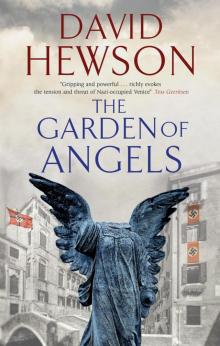 The Garden of Angels
The Garden of Angels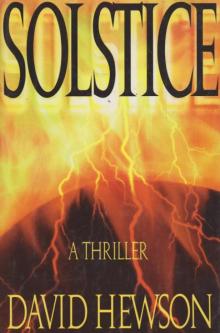 Solstice
Solstice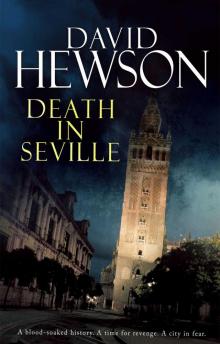 Death in Seville
Death in Seville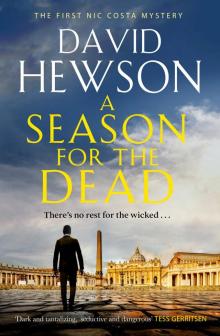 A Season for the Dead
A Season for the Dead The Killing tk-1
The Killing tk-1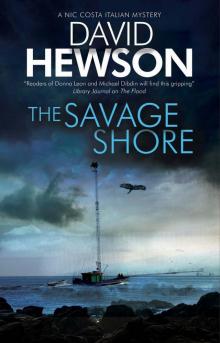 The Savage Shore
The Savage Shore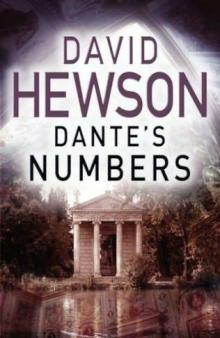 Dante's Numbers
Dante's Numbers Sacred Cut
Sacred Cut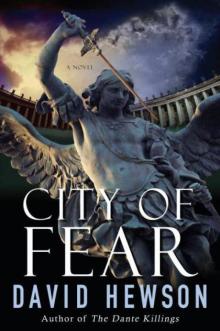 City of Fear nc-8
City of Fear nc-8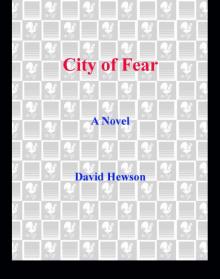 The Blue Demon
The Blue Demon The Garden of Evil
The Garden of Evil The Lizard's Bite
The Lizard's Bite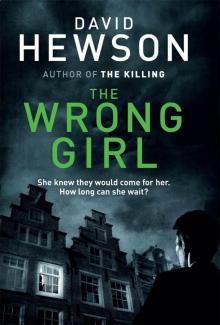 The Wrong Girl
The Wrong Girl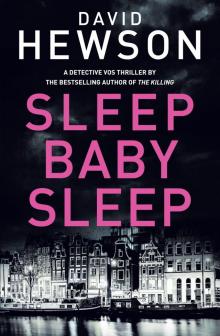 Sleep Baby Sleep
Sleep Baby Sleep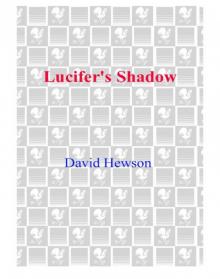 Lucifer's Shadow
Lucifer's Shadow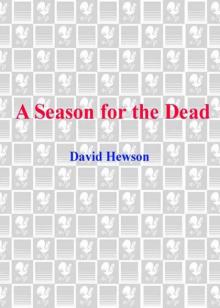 Season for the Dead
Season for the Dead The Seventh Sacrament
The Seventh Sacrament The Garden of Evil nc-6
The Garden of Evil nc-6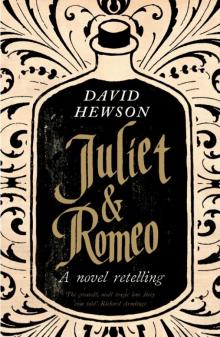 Juliet & Romeo
Juliet & Romeo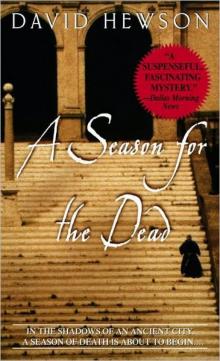 A Season for the Dead nc-1
A Season for the Dead nc-1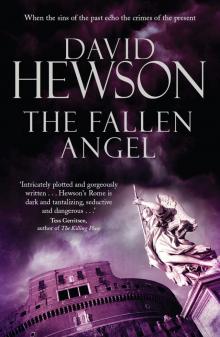 The Fallen Angel nc-9
The Fallen Angel nc-9 Little Sister
Little Sister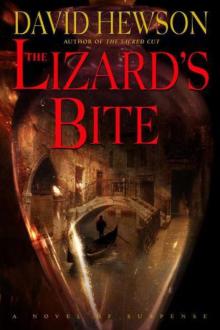 The Lizard's Bite nc-4
The Lizard's Bite nc-4 The Killing 2
The Killing 2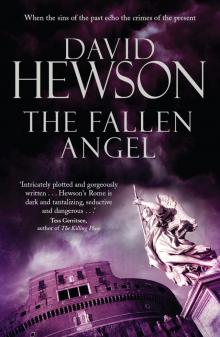 The Fallen Angel
The Fallen Angel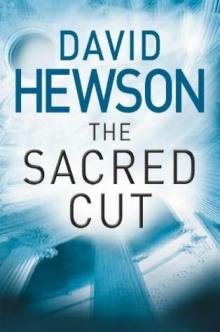 The Sacred Cut
The Sacred Cut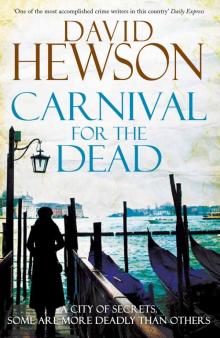 Carnival for the Dead
Carnival for the Dead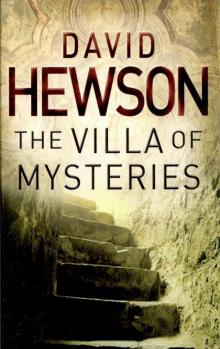 The Villa of Mysteries nc-2
The Villa of Mysteries nc-2 Macbeth
Macbeth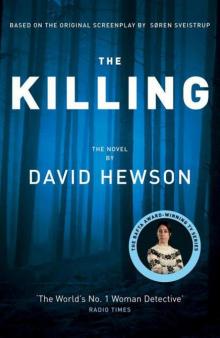 The Killing - 01 - The Killing
The Killing - 01 - The Killing The Villa of Mysteries
The Villa of Mysteries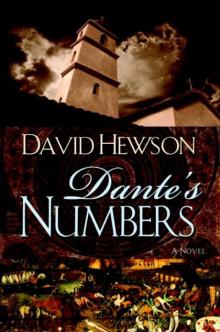 Dante's Numbers nc-7
Dante's Numbers nc-7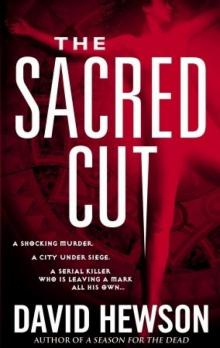 The Sacred Cut nc-3
The Sacred Cut nc-3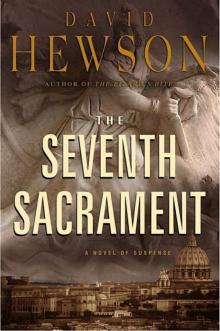 The Seventh Sacrament nc-5
The Seventh Sacrament nc-5